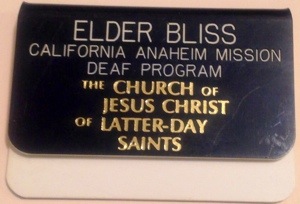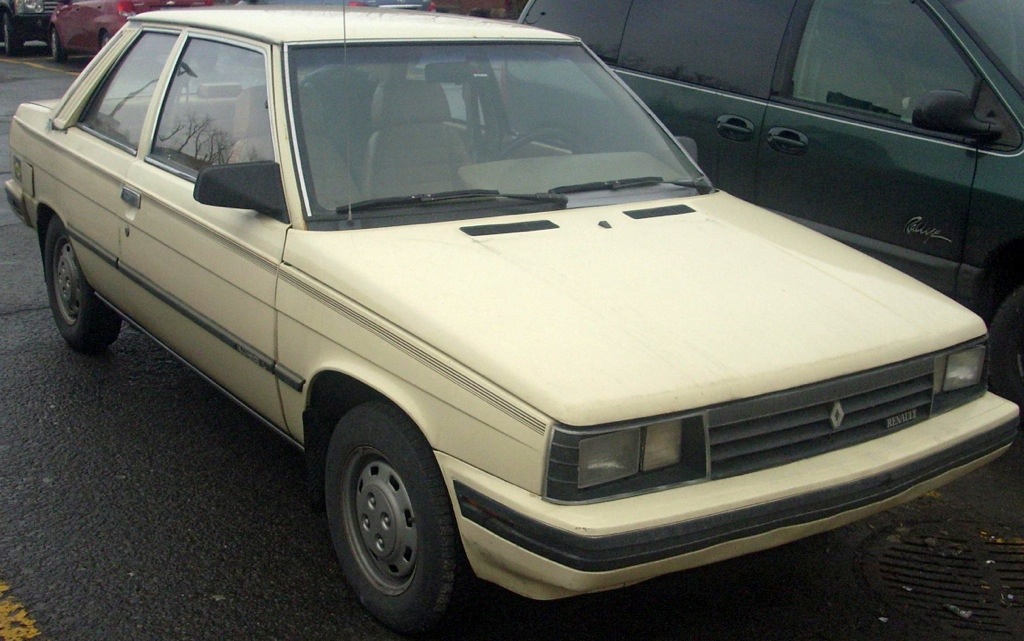The Best Car Advice I Ever Received

Brakes are something that you tend to take for granted. . .until that day you push the pedal to the floor and your car refuses to stop. Let me tell you, gets the blood pumping.
Today, I’m going to talk about when systems fail. What do you do when you not only blow your budget but you REALLY blow it?
It was January, 1986 and I was working as a missionary for the LDS Church in Orange County, California. Mormon missionaries are those guys you see riding around on bikes with white shirts and ties.

(Photo credit: Reubenscube.net)
Except that my missionary companion, Elder Stevens and I had a car. Elder Stevens was deaf and we worked with the deaf community in the greater Anaheim, CA area. We took turns driving. Elder Stevens actually preferred driving and I preferred to not drive. You would think this was a great arrangement. And it would have been had he been a better driver. A belief in guardian angels was definitely helpful when he got on the freeway.
I don’t remember which of us was driving when the brakes finally failed completely. We managed to get the car safely to our apartment and called the man in charge of the missionaries in Anaheim, President Van Allen.
President, we’ve got a problem. The brakes on our car have failed.
Are you elders okay?
Yeah, we’re at our apartment. What do we do about the car?
Can you get it to the garage by the mission home? We have two elders who maintain our cars.
Yeah, it’s only a few miles with no freeways. I think we can make it.
I’ll let them know to expect you.
No way was I letting Elder Stevens drive. I’d often downshifted to slow down, the problem was our car was an automatic. Sure, I should have called a tow truck. But, at 20 years old, you’re indestructible. In this case we arrived safely.
Everything about an LDS missionary’s life is tracked, from the time you get up (6:30am) to the number of hours you spend proselyting (60 was the goal.) So, you also had to track your milage. Each car had a limited number of miles you could drive each month. When you ran out of miles for the month, you walked.
Yeah, President said you guys could fix the brakes?
Not today. Leave it here and it will probably be at least a week. We have to figure out the problem, and then order parts before we can do the repairs.
So. . . what do we do for a car in the mean time?
We have a loaner car.
Miles stay with the car right?
Yep. The loaner has it’s own 1200 miles for the month.
Sweet. We took the loaner car and had another 1200 miles to use. A week later, our car was done and we swapped back.
The miles reset at the beginning of each month. In February, we got a new set of miles. . .and a new car problem. This time it was the ignition switch. So, we were back to the maintenance elders. Another week of a loaner car with it’s 1200 miles.
When March rolled around, we reset our allowable miles. . .and we got a new car problem. This time the transmission went out. There was no driving it to the maintenance elders this month. A tow truck and another week of the loaner car.
The following month, our scheduled time was complete and Elder Stevens was transferred to North Carolina, and I was assigned to work with some English speaking elders for a few weeks until my 2 year mission was complete.
During our 3 months as companions, Elder Stevens and I estimated that we had racked up over $1500 in car repairs, over $500 per month. There was a goal for monthly car maintenance. (I mentioned that everything was tracked. . .and most of it had a goal associated with it.) The mission goal was $7 / month in maintenance per car. The mission had about 20 cars assigned to it. We covered all of Orange County. So, we had singlehandedly spent about double the budget for the entire fleet.
What’s this have to do with the IT business? Project managers are really good at making estimates. We estimate schedules. We talk to engineers and programmers who offer optimistic projections and the PM figures out what kind of a buffer to assign and he makes estimates for their time. So, what do you do when your estimates are so far off that they start spilling over and sucking resources from other areas?
In our missionary example, there was not really another car available. We had to keep using the Lemon. But, in business generally you hit a point where you make a decision. You can either increase the budget, cut features, throw people at it, or you simply pull the plug.
When I make a schedule and a project estimate, like most PMs I include two buffers, one that I tell people about, and one that I don’t. Always keep a little bit of wiggle room in your back pocket. But, when a project is clearly headed off a cliff, it’s the PMs job to rein it back in, get management to expand the budget, or pull the plug. Projects have a life of their own, and it’s disappointing to have to kill one. However, better that than to put an entire portfolio at risk. Because the resources have to come from somewhere.
The night before I was supposed to fly home from my mission, the Mission President met with the group of us who had completed our service and were being released.
Elders and Sisters, it’s customary for the Mission President to offer some words of advice as you complete this portion of your life and move on to the college or jobs or whatever the next phase will be. The best possible advice I can offer you is NEVER buy a Renault Alliance car!
It’s advice I’ve followed to this day.
Rodney M Bliss is an author, columnist and IT Consultant. He lives in Pleasant Grove, UT with his lovely wife and thirteen children.
Follow him on
Twitter (@rodneymbliss)
Facebook (www.facebook.com/rbliss)
LinkedIn (www.LinkedIn.com/in/rbliss)
or contact him at (rbliss at msn dot com)


Its good advice.
Kind of like “Don’t stick needles in your eyes” is good advice. LOL
>